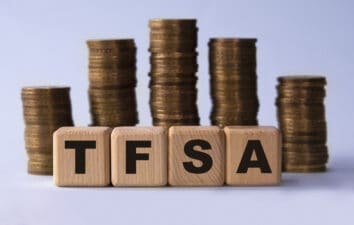At almost any point in time, there is no shortage of investors and analysts offering a gloomy outlook on stocks. The most successful response has always been to own a well-diversified portfolio across both names and asset classes, and ignore the noise.
This is still true today, but when some of the world’s greatest investors say at roughly the same time that they’re bearish on stocks (and put their money where their mouth is by either shorting indices or investing in assets like gold), it is essential to understand their rationale and re-assess risk levels.
These investors include Prem Watsa (of Fairfax Financial Holdings Ltd.) as well as Stan Druckenmiller, and both of which are legendary money managers. Both of these investors have sustained, significant market-beating returns over several decades. Here are their analysis and how to respond.
Prem Watsa
Watsa is known as “Canada’s Warren Buffett,” and with a track record of growing the share price of Fairfax by 19.4% annually since 1985, the name is justified. Watsa discussed a series of related risks during his latest annual report and, as a result, has invested heavily in equity hedges that will gain in value if equities suffer.
Because of the strong markets over the past several years, Watsa’s hedges are currently down over $3 billion since 2010, but Watsa was in a similar position before the 2008 crash, and those equity hedges reversed their losses to turn into massive gains for Fairfax.
Watsa cites a series of intersecting global risks. In Canada, Watsa cites skyrocketing housing prices—particularly in Toronto and Vancouver—as a growing risk, especially since this real estate wealth is being accessed largely via debt, and this debt growth has significantly outpaced income growth. Moreover, most of this debt is concentrated in the hands of younger people with less income and wealth, and less education/income potential.
Watsa also cites China as a growing risk (with what he calls the greatest real estate bubble in history and China’s lessening ability to support it) as well as a growing deflation worldwide as negative interest rates are becoming increasingly common worldwide and growth is slowing.
Stan Druckenmiller
Stan Druckenmiller is one of history’s greatest hedge fund managers (with a 30% average annual gain over 25 years), and has recently upped his gold allocation (to 30%) as a hedge against stock-market weakness.
Druckenmiller’s bearish analysis is centred on the U.S. Specifically, he thinks that given the fact that U.S. credit market debt as a percentage of GDP is near historical highs, and given the fact that the U.S. no longer has monetary policy options available to stimulate the economy (with interest rates at rock-bottom levels and the Federal reserve already having borrowed more than ever before), markets should be trading at a discount to historical valuations rather than the current premium.
Druckenmiller notes that despite corporate net debt growing at an extremely high pace since 2010 and recently peaking, corporate earnings have actually been declining substantially. Historically, the growth rates of these two things generally rise and fall together (with some lag), and the current lag between when they last coincided back in 2010 is the largest in financial history according to Druckenmiller.
Druckenmiller also notes that extreme debt levels, high percentages of non-performing loans, and slowing growth in China means that the previous engine of global investment growth is now out of commission. Druckenmiller states that it makes no sense that the S&P is now trading at 18 times earnings compared to eight times earnings in the early 1980s when the market’s best days were ahead.
What does it mean for your portfolio?
A balanced and diversified portfolio is key. Part of this should include some exposure to gold. Barrick Gold Corp. (TSX:ABX)(NYSE:ABX) is a smart way to gain this exposure, especially as Barrick reduces debt levels and focuses on growing free cash flow by focusing on high-quality mines and closing others.
A low-volatility name such as Brookfield Infrastructure Partners L.P. (TSX:BIP.UN)(NYSE:BIP) that invests in real assets like toll roads, pipelines, and ports is also an effective way to protect against market weakness since the company’s cash flows are fairly stable regardless of the economy.









